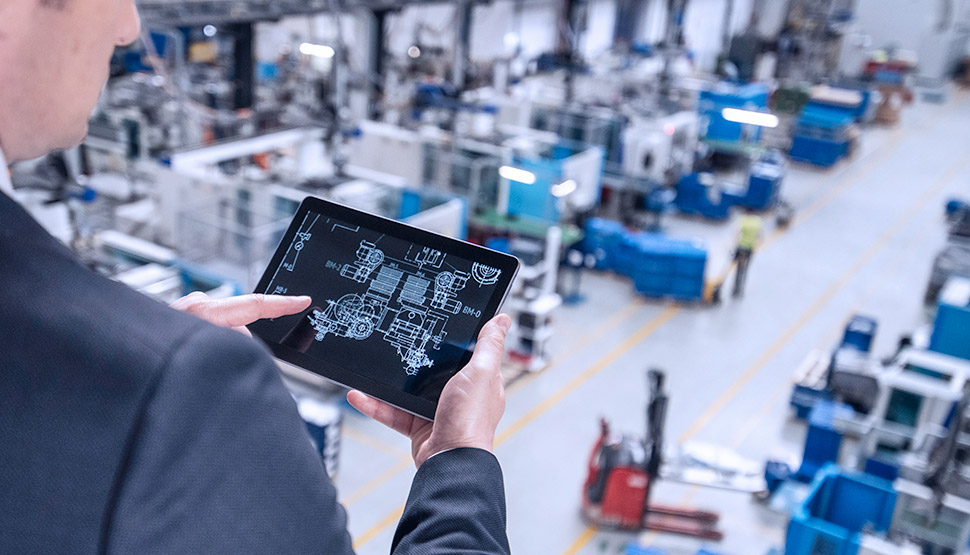Remote engineering
Virtual visits ensure business continuity

Solid business plans work no matter what the circumstances. Disruptions are taken in stride.
Since 1835, much of FM’s normal servicing model depended upon its engineers using their senses. What they see, hear, smell and touch augments their expertise as they conduct site visits. Then, for the first time in company history, stay-at-home orders and business shutdowns caused by the COVID-19 pandemic rendered most site visits impossible.
That only meant engineers could not be physically on-site. Then, FM’s business continuity plan for this disruption took effect. Engineering immediately shifted to remote servicing technology to obtain real-time data needed for precision risk assessment.
Rick Smith, vice president and manager of operations engineering at FM, establishes and executes processes for the company’s in-house engineers. The global pandemic put those processes to the test.
“When you’ve prepared for certain situations, that preparation helps you respond even when the scale is way beyond what was anticipated. Our remote servicing success is directly related to our level of preparation,” says Smith.
Common tools scaled up
Cell phone and video conferencing—though not revolutionary technology—serve expanded purposes when FM cannot be at a facility. The expert leading the phone and video calls is what makes the difference. Answering thoughtful questions posed by FM engineers, clients can use their senses to communicate a clearer picture of what’s happening on site.
During lockdown, FM engineers conducted remote risk assessments on a case-by-case basis for a number of different situations; be it a regular visit, an occupancy that changed due to the pandemic, or a first-time site assessment. “Although the goals of assessing the risk and helping the client reduce loss had not changed, we had to accomplish it using different processes and tools than we ever had before on a wide-scale basis,” Smith says.
Cell phones make virtual walk-throughs an easy way to get real-time visual information. Sometimes, just a phone call provided the necessary connection to offer guidance. On group video calls, details are provided through shared files and screens.
Remote methods also included the company’s global natural hazard mapping capabilities, fixed-wing and satellite imagery, and leveraging its knowledge of industries coupled with its analytics.
“Although our business model is boots on the ground, we’d had a process in place to engage with clients remotely if it were unsafe to travel somewhere for health or security reasons,” Smith explains. “Such remote visits typically happened about 10 to 20 times a year. Contrast that with 13,000 remote servicing assessments conducted in the past six months.”
FM engineers were not only prepared for remote servicing overall but also for each specific encounter. Smith says, “Our engineers prepare for remote visits as much as if they were going in for a full in-person visit. By every measure, they have risen to the challenge of protecting the value of our clients’ business even in such unusual and quickly evolving circumstances as these.”
Our remote servicing success is directly related to our level of preparation.
Rick Smith, vice president and manager of operations engineering, FM
Rapid change
No two clients are alike and that is just as true during a pandemic. Some businesses ramped down production due to shelter-in-place orders. Others deemed essential businesses ramped up production of items such as cleaning products. Still others changed production altogether to make much-needed items like hand sanitizer. Some even reengineered buildings or property to handle increased numbers of patients or additional equipment during the outbreak.
“Our clients pivoted to meet the market demand that was out there,” Smith describes. “If a product was in greater demand like healthcare products and services, packaging or sanitizer, they ramped up.”
To help clients respond appropriately without increasing their risk of fire, explosion or other hazards, FM’s engineers collaborated with clients on recommendations, resources and new training. Teams worked closely with clients to take special precautions to minimize risk.
“This is a true testament to the need for clear communication throughout the organization in a time of rapid change. We didn’t have weeks to prepare for scaling up remote servicing,” Smith notes.
Back to the future
FM Chairman and CEO Tom Lawson stated in the article, ‘Speed beats perfection in a crisis,’ published on LinkedIn by Merryck & Co, “Remote servicing in no way replaces in-person visits, but we were able to continue protecting client facilities throughout the pandemic, providing risk assessment and improvement as well as managing impairments.”
As the world returns to normal, the company is returning to in-person engineering visits. But in the face of unprecedented challenges, FM’s commitment to loss prevention is evident in the results it brings its clients. See how, once again, resilience is a choice.
